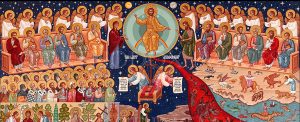Kevin Frazier at TechCrunch writes:
Just as the electrification of America brought the nation out of the Great Depression, the Wi-Fi-cation of the nation can ease us out of the COVID-19 collapse. Consider that in 1932, a mere 10% of rural Americans had electricity. As a result, a divide in opportunity emerged: On one hand, city-dwellers had the modern infrastructure required to enjoy a standard of living that would allow them to fully pursue the American Dream; on the other, millions of Americans were literally in the dark (or, at least, candle-lit dimness).
That’s why the electrification of American became a central plank of President Franklin D. Roosevelt’s Great Depression recovery plan. But his plan wasn’t just to turn the lights on, it was to empower communities by making them the owners of their newly generated electricity. So under FDR’s guidance, Congress created the Rural Electrification Administration (REA)…
By engaging community members, the REA turned “users” into “owners” and, consequently, did much more for rural America than would have been possible under federal auspices alone. On step two, the REA launched an “electric circus” that sent REA staff to educate new electricity users on how best to operate equipment, perform chores, cook and, of course, stay safe. This “circus” was more like a civic service program that facilitated a knowledge transfer from those who knew electrified life to those being exposed to the possibilities generated by electricity for the first time.
If the Great Depression showed rural America had been left in the dark, COVID-19 has revealed the plight of the millions of Americans left offline. Forced to shelter in place, Americans have been reintroduced to the centrality of high-speed internet to learning, working and simply living. But there’s an expansive digital divide between those with high-speed internet and those left searching for access to affordable broadband. Approximately 28% of Americans in rural areas do not have access to or cannot afford broadband — the rate is 23% in urban areas.






